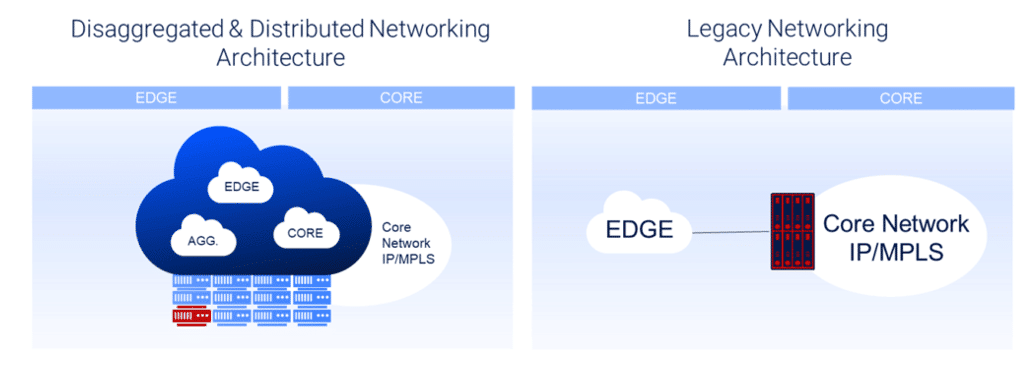What is Network High Availability?
A high-availability network is one that consistently operates at an optimal level, without manual intervention, to ensure uninterrupted service. Availability in a network is typically measured as a percentage of yearly uptime. In the networking industry, a network is considered to attain “high availability” when it achieves “five nines” – 99.999% availability. This means the system or service is accessible and functions correctly 99.999% of the time, with a maximum allowable downtime of approximately 5.26 minutes per year.
Importance of high-availability networks
The pursuit of a high-availability network aims to prevent network outages, which can have severe consequences for end consumers, business customers and service providers.
- From an end consumer perspective, in today’s digital world, reliable online services are expected. Network availability is crucial for ensuring uninterrupted access to websites, applications and services, leading to customer satisfaction and loyalty.
- From a business standpoint, network outages can result in significant financial losses and even jeopardize emergency services and healthcare. Prioritizing network availability enables all sectors to maintain productivity, serve customers, prevent revenue loss, and ensure the smooth operation of critical services.
- Service providers are driven to avoid network outages to retain customers, prevent revenue decline, and uphold their reputation. In the event of an outage, their primary focus is containing the impact and swiftly recovering to minimize any negative effects.
Key elements in a high-availability network
For a network to be considered high availability, several common mechanisms are typically implemented to prevent outages and reduce the impact of failures. These mechanisms operate at both the hardware and software levels.
- Failover is the process of switching from a primary system or component to a backup or redundant system when a failure occurs. It ensures continuous connectivity and high availability. The failover system automatically takes over in the event of a failure or unavailability to minimize downtime and loss of connectivity. An effective failover mechanism activates the backup system only when necessary and as quickly as possible, following predefined policies.

Smaller failure radius with disaggregated and distributed networking architecture
- Redundancy is essential for enabling failover in a high-availability network. It involves adding extra components, systems, or resources that serve as backups or duplicates of the primary ones. Redundancy acts as a safety net against failures and maintains uninterrupted connectivity and service availability. To be effective, redundancy should be implemented at both the software and hardware levels. This includes having redundant network switches, routers and power supplies to eliminate single points of failure in hardware. In software, services and applications should have backups available to address software issues. Adopting a cloud-native approach can also enhance redundancy as each microservice inherently has a backup.
- Fast recovery is crucial for networks since failures are inevitable. Network failure recovery enables swift restoration of network functionality following a disruption, minimizing downtime and service interruptions. Fast recovery can be applied to various processes. In hardware failures, it relies on redundant components. More advanced solutions allow for seamless and rapid hardware replacement without a maintenance window. In the case of software failures, a data recovery method is employed to restore the system to its pre-failure state with minimal data loss. Leveraging cloud-native solutions can further expedite the setup of a new service.
Implementing these mechanisms allows a high-availability network to enhance its resilience, maintain uninterrupted operations, and reduce service interruptions.
Demand greatness: carrier’s high-availability solutions
High-availability networks play a critical role for service providers, enabling them to effectively minimize the impact of failures, reduce downtime, and ensure seamless network connectivity.
When seeking a networking solution, service providers should prioritize the implementation of a top-notch high-availability solution with a proven track record in tier-1 networks. These carriers require solutions that can reliably handle high volumes of traffic, offering a guaranteed 99.999% service level agreement (SLA). By adopting such a solution, service providers can achieve peace of mind, knowing that the carrier has undergone extensive testing to ensure unwavering high availability and uninterrupted service delivery. Embracing a robust high-availability network solution is key to meeting the demanding needs of service providers in today’s dynamic and ever-connected digital landscape.
High availability through DriveNets cloud-native architectures
Service providers are constantly seeking better, more flexible, and cost-effective network architectures. However, it is essential that any chosen network architecture incorporates proven high-availability capabilities, including crucial elements like failover, redundancy, and rapid recovery.
DriveNets Network Cloud, a cloud-native software solution that turns the physical network into a shared resource, offers service providers a highly reliable and flexible network architecture. Service providers can benefit from a fully redundant disaggregated router model that ensures uninterrupted functionality and traffic forwarding, even during fabric failures. With DriveNets, replacing failed hardware is quick and seamless, without the need for maintenance windows or a cumbersome forklift. Join leading service providers in harnessing DriveNets’ high-availability solutions. Learn more about DriveNets Network Cloud.





